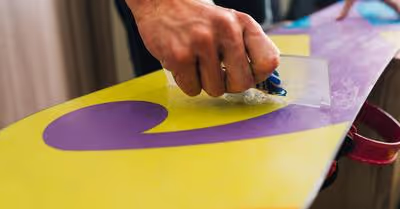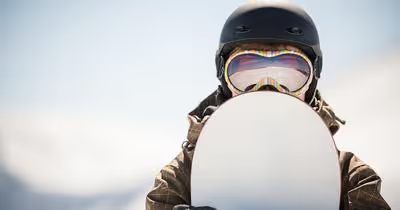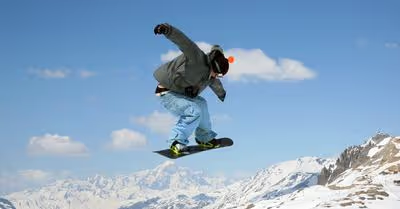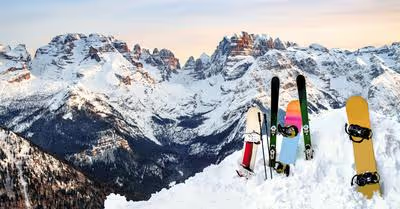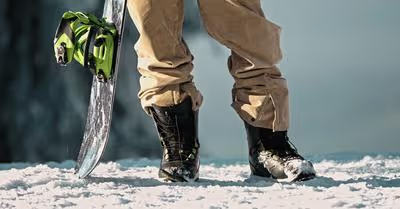Table of Contents
Parts of a Snowboard
A snowboard is comprised of several parts, each of which plays a crucial role in allowing the snowboarder to glide down a snowy slope with both speed and control. The basic anatomy of a snowboard constitutes the following parts.
1. Snowboard Base
The bottom side of the snowboard that is in contact with the snow is called the base. The majority of snowboard bases are made using a polyethylene material known as P-Tex and come in two distinct types: sintered and extruded.
Extruded bases are melted into shape and are easy to repair as well as long-lasting. However, because extruded bases hold less wax than other bases, they tend to run slower. Meanwhile, sintered bases are sliced into shape by first being ground into a powder, heated, and then pressed. Overall, a sintered base is inarguably superior to an extruded base as it holds more wax and is way more durable.
However, another type of snowboard base is even better than a sintered base. This is a graphite base, which has a high wax holding capacity and is hence much faster than a sintered base snowboard. However, graphite bases are usually found on racing snowboards.
2. Snowboard Camber
The camber is the arch made by your snowboard when you place it on a flat surface. The higher the camber, the more pressure experienced by the nose and tail of the snowboard. Flat camber is typically used by boarders who make lots of freestyle moves because snowboards with a flat camber tend to spin quickly.
A slightly springy camber is usually thought to be ideal for most snowboarding levels as the springiness helps to stabilize the board on hard snow and at higher speeds, thereby improving maneuverability.
3. Snowboard Edge
The edge of a snowboard is a metal edge around the rim of the board that helps cut through the snow. The toe edge is on the side of the snowboard where the front foot is, while the heel edge is on the side of the snowboard where the back foot is.
4. Effective Edge
The effective edge of a snowboard is the length of the metal edge that is in contact with the snow. The effective edge is what helps the snowboard make a turn by cutting into the snow and increasing friction on one edge of the board compared to the other. This does not include the metal toe and heel edges of the board.
When the snowboard is in a carved turn, it is the effective edge that is in contact with the snow. The longer the effective edge, the more stable and controlled the ride, while the shorter the effective edge, the more efficiently the board will turn.
5. Snowboard Flex Point
The flex point of a snowboard can be found at the point in between the two bindings on the snowboard deck. This is the point where the board ends or begins its flex. With regards to this, there are two types of flex points: stiff torsional flex, which allows a board to grip hard ice and snow, and soft torsional flex, which makes the board less responsive but much more forgiving.
Boards with soft torsional flex are easier to turn and handle better in bumps, making them more popular amongst beginners and lightweight riders.
6. Snowboard Nose/Tip
The nose or tip of the snowboard is the front end of the board in front of the rider’s front foot. If the snowboards front and back ends are similar, the nose or tip is the end that is turned up slightly higher. Snowboards used by high-speed alpine riders typically have a more pointed nose to prevent the board from digging itself into the snow.
7. Snowboard Tail
The rear end of the snowboard, behind the rider’s back foot, is known as the tail. Typically, the tail is flatter and more square-cut than the nose, while many alpine boards permit more turning power and coordination via a split in the tail.
8. Snowboard Deck
The top of the board, the side that is opposite the snowboard base, is known as the snowboard deck. This is the part of the board where the bindings are mounted and where the rider stands. Most snowboard decks have mounting holds into which the bindings are screwed so that the rider’s feet can be firmly secured onto the deck.
The mounting holes on a snowboard deck allow you to connect your bindings in various stances and angles. Therefore, riders can adjust their bindings to make their ride more responsive or more forgiving.
Recent Articles



